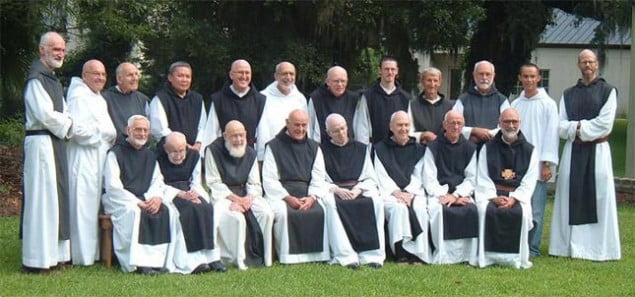
Posted on 02/05/2018 1:59:12 PM PST by Red Badger

The TRAPPIST-1 system is made up seven roughly Earth-sized planets orbiting a dwarf star around 39 light-years away and is often hailed as the most likely place for life outside our solar system that we know of. A new study offers further insight into each TRAPPIST planet's biological properties and the signs are encouraging.
The new research comes from scientists around the globe, including University of Bern in Germany, the Sorbonne in France, Cambridge, NASA Johnson Space Center in Houston and others. Their paper, "The nature of TRAPPIST-1 Exoplanets," shows that the planets don't have an excess of hydrogen. This means that they are rocky like Earth or Mars, not gaseous like Uranus or Neptune.
In addition to rocky exteriors, planets c and e are likely to have rocky interiors. This would give them another similarity to our solar system's terrestrial planets like Earth and Mars. Planet e, the fourth planet from the TRAPPIST star, is considered the most similar to Earth.
"With TRAPPIST-1e, it is the first time that we can precisely characterize an exoplanet with is most similar to the Earth in terms its radius, mass and the amount of radiation that it receives from its host star," study authors Simon Grimm and Brice-Olivier Demory of Bern wrote in an email to CNN.
"This study allows us to determine the masses—and therefore the densities of the planets—much better than before. These two properties are the basis which are needed for further studies regarding the habitability of the planets or possible formation scenarios."
The TRAPPIST-1 planets offer many curiosities. In addition to their seemingly Earth-like qualities, the planets also appear to be remarkably close to one another. “The system is dynamically stable now, but the planets could not have formed in this tight pack,” says Nikole Lewis of the Space Telescope Science Institute (STScI), co-leader of the Hubble study in a statement to NASA.
“They’re too close together now, so they must have migrated to where we see them. Their primordial atmospheres, largely composed of hydrogen, could have boiled away as they got closer to the star, and then the planets formed secondary atmospheres.”
The scientists used NASA's Hubble Telescope for research. As the planets in the TRAPPIST-1 system pass between their star and the powerful optical telescope, the dwarf star blocks out some of each planet's light. The Hubble can observe changes in specific wavelengths of light, these changes offer clues about atmospheric conditions.
The Hubble work here will soon be upended, it is hoped, by the coming James Webb Telescope. The Webb will launch in 2019 and will have a greater focus on planetary atmospheres, looking for heavier gases like carbon dioxide, methane, water, and oxygen. Scientists hope that by eliminating the possibility of massive amounts of hydrogen, they're giving the Webb a leg up.
“Hubble is doing the preliminary reconnaissance work so that astronomers using Webb know where to start,” Lewis says. “Eliminating one possible scenario for the makeup of these atmospheres allows the Webb telescope astronomers to plan their observation programs to look for other possible scenarios for the composition of these atmospheres.”
That the planets are rocky, that they all exist in the same place, that some appear to have Earth-like qualities, strikes several of the scientists as bordering on science fiction.
“No one ever would have expected to find a system like this,” says STScI team member Hannah Wakeford in the NASA statement. “They’ve all experienced the same stellar history because they orbit the same star. It’s a goldmine for the characterization of Earth-sized worlds.”
Michaël Gillon, a study author from University of Liège in Belgium, wrote in an email to CNN that the planets are "very close to...pure fantasy...and still, TRAPPIST-1 does exist!"

Germans didn’t invent beer................THEY PERFECTED IT!................
X-O-Planet Ping!.............
A rocky planet that orbits a star and is roughly the size of Earth... must be Aliens there!...and what a bonus it’s only 39 light years away!
All we need is a Superluminal ship to get there in less than a month!...................
https://www.youtube.com/watch?v=vyAh9OENJPU
So, what do you think about this?
I find these kind of videos highly entertaining.
Not that I believe then, but they are very entertaining.
Exactly!
The aliens seem to have moved all the planets in the system into the habitable zone for terraforming.
Flat-Earthers are like Climatologists.
They believe without any real scientific proof, and when presented with real scientific proof to the contrary, they ignore it...............
TRAPPIST-1 Planets Are Even More Like Earth Than Earth!
;-)
“...the most likely place for life outside our solar system...”
Because “life” is so simple - just add water!
The most “Earth like” planet ever discovered is almost exactly the same size and mass as Earth and orbits a yellow dwarf star at close to the same orbit as Earth.
It is called Venus. I don’t think anyone would want to go live there.

Yeah, but we end up landing on one...
Next thing ya know, we get a flippin’ alien ovipositor rammed down our throats!
Then...
“Nuke the site from orbit. Just to be sure.”

Planet Beer! Woo hoo!!!
Thanks Red Badger. Nice, a planetary system named after a beer!
 |
||
| · join · view topics · view or post blog · bookmark · post new topic · subscribe · | ||
| Google news searches: exoplanet · exosolar · extrasolar · | ||
So does each planet have crazy loons whining about climate change, I wonder?
Jesuit-11 planets are hellish.
Two more words: flare. star.
Plus, we will never know if there is life on any of those planets, because nobody living now will ever go there.
Disclaimer: Opinions posted on Free Republic are those of the individual posters and do not necessarily represent the opinion of Free Republic or its management. All materials posted herein are protected by copyright law and the exemption for fair use of copyrighted works.